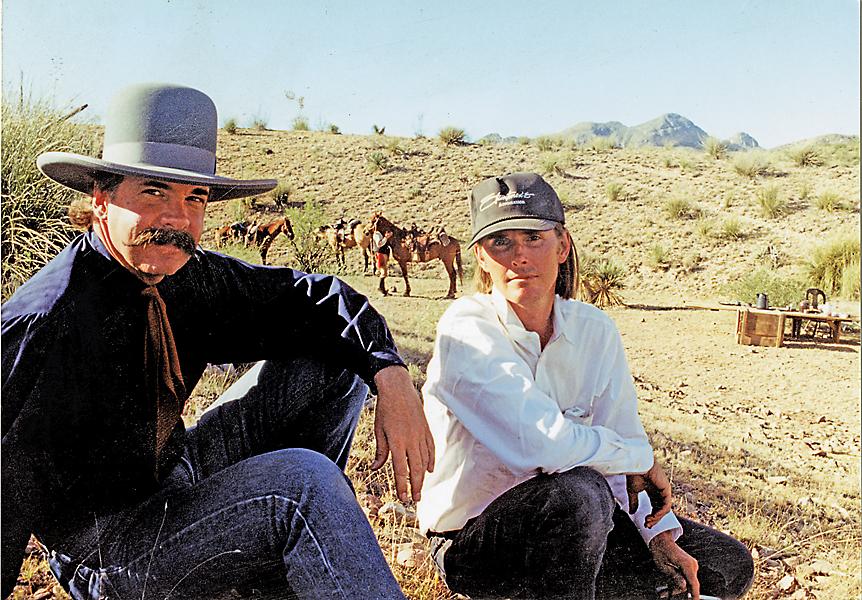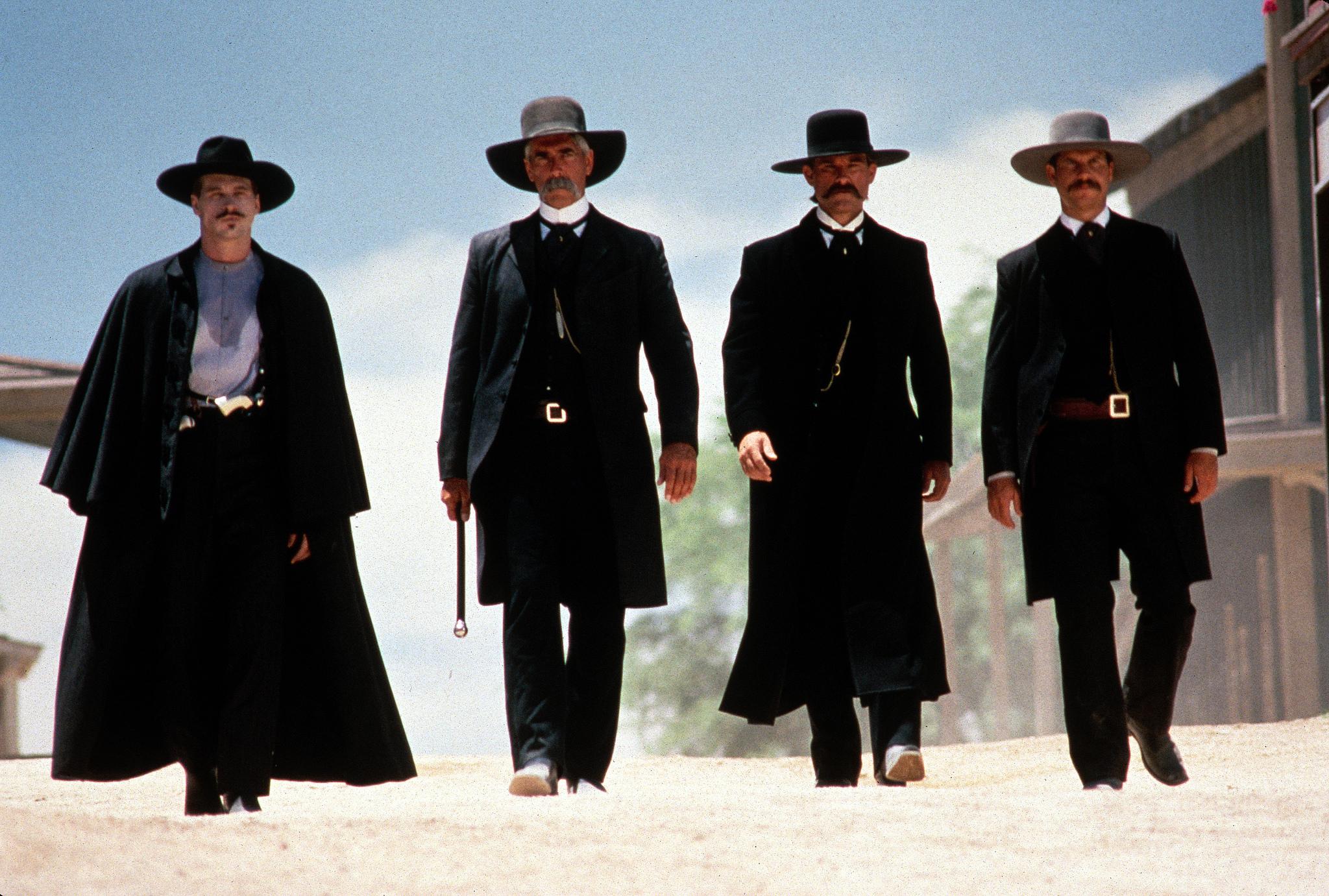At the risk of sounding sexist, call this film what it is: a man’s movie. Sure, there are plenty of women who enjoy the movie, and not every man likes it, but “Tombstone” caters mostly to men. Dudes believe that at the core of who they are, there is a rugged individual begging to get out. Not all of us, but a lot of men (writer included) believe we could make in the wild west. We could’ve been gunslingers. “Tombstone” would be our instruction manual. We’d walk around saying things like, “I’m your Huckleberry,” and perform gun-slinger tricks with water cups. That said, fans of any gender will appreciate these behind the scenes details about one of the greatest instruction manuals, er, films ever produced.
25. Who Really Directed This Film?

Jarre (right) on set | truewestmagazine.com
When writer Kevin Jarre wrote the script for “Tombstone,” he intended to direct the movie himself. In fact, that was the studio’s plan too. As is wont to happen in Hollywood, plans changed. After a month of filming, the studio fired Jarre. Despite rumors that actor Kurt Russel was the real director, the man who made it happen was George Cosmatos with a little help from the actors. The studio did not extend the shooting schedule for the last month so they had to double-down on their efforts to make it happen on time.
24. Awesome Cast
To make a good film, one doesn’t have to cast known actors, but it didn’t hurt “Tombstone.” This was the 1990s. Westerns were way on the back burner. With names like Sam Elliot, Bill Paxton, Val Kilmer (back before everyone hated him), and Kurt Russel in the leading roles, producers had the makings of greatness. But, great actors alone do not the movie make. If the story is engaging, competent actors can work around bad lines. Also, a solid editor can make miracles, but they have to have good daily work or there will be nothing to stitch together. It’s all about what they capture on film. It was Russel and Kilmer who helped make the film a success, both on set and afterward in the editing room.


